| The Heard has a high reputation as a museum of Native American
history and artifacts, mainly of the tribes of the south west. History
is ongoing, and this sculpture near the entrance was designed to illustrate
this - the rightmost stakes are made of natural woods, and as the display
continues more and more of each successive stake is made of glass and metal,
in natural earthy colours to begin with and ending with the bright unnatural
blue. | 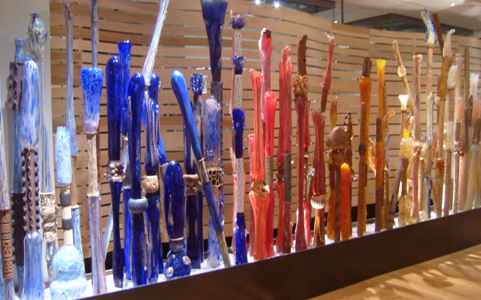 |
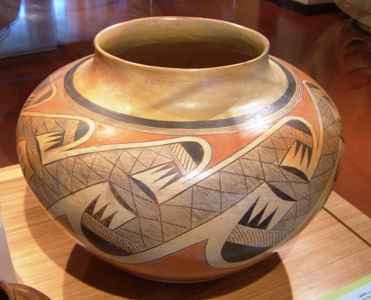 | It has a lot of
modern pieces by currently working Indian artists and craftsmen, but the
common theme is their basis in traditional materials, styles and decorative
themes. This pot is in the traditional shape, but the stylised wing pattern
has been given a modern interpretation - I could easily give it house room. |
| Another comparison of old and new, the shirt at the front is a
modern version of the older traditional one at the back. | 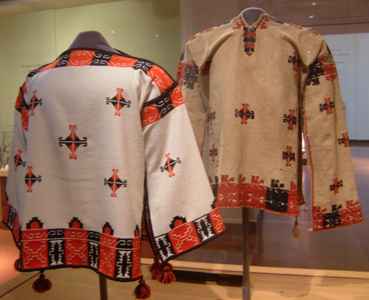 |
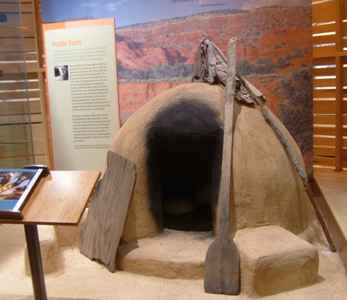 | A number of
displays show how the peoples lived. This one shows a bread oven which was
used to bake loaves after the Spanish invaders had introduced both wheat and
baking to the natives. Before that time they had only made flat breads like
tortillas, which can be cooked over an open fire. |
Three different displays of modern jewellery, but each in the style, again
traditional, of a different tribe. The first uses pieces of turquoise as
stones set in silver, both materials found in and around Arizona. The second
uses a cut silver overlay on a silver base, the exposed base is then
oxidised to make the design stand out. The third uses many different stones
to create multicoloured pieces which, at first glance, look enamelled. The
craftsmanship is superb.
The Hopi give kachina dolls to young girls to represent prayers wishes for
good health, growth and fertility and so they form a daily reminder of Hopi
beliefs and values. The picture on the left is of kachinas arranged to
represent the ceremonial cycle which forms the basis of the life of the
tribe. The picture on the right shows just a few of over 400 dolls collected
by Senator Barry Goldwater and donated to the museum.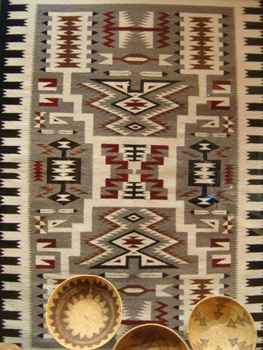 |
A
woven rug with a very traditional geometric design on the left. The sand
painting on the right represents traditional ideas and beliefs but in a
much more modern style - it was created in 2004. | 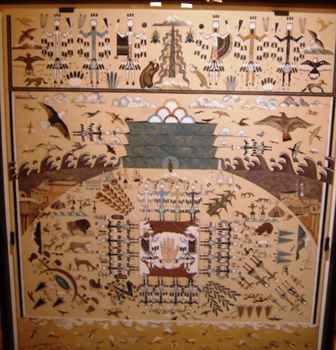 |
| Contrary to popular belief, Indian peoples used more than drums
for their music. these three violins are all made using natural materials
such as gourds and parts of various desert plants such as cacti and
succulents. | 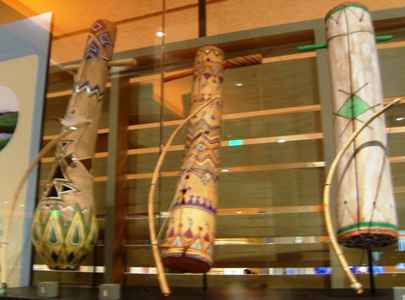 |
As the Indians had more and more contact with the white settlers they
adopted materials and styles and incorporated them into their traditions.
The dress has been modelled on styles worn by the white women in the 19th
century, but the Indian seamstress has added a beaded shawl and belt. They
also made much use of leather and this was often highly decorated with quill
embroidery, shells and stones. The settlers brought trade goods including
beads which then almost replaced the original decorative materials. They are
still a popular means of decorating clothing today.| The
workmanship on this chest is very intricate. The Indian maker has built
a very traditional western piece of furniture, but it is quite
beautiful. | 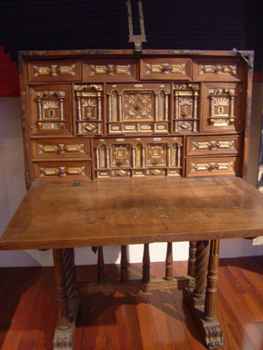 |
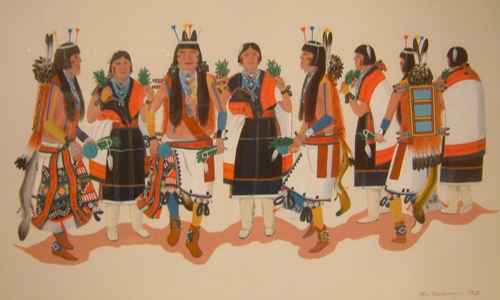 | Part of the museum
is used to display both traditional and modern art. For me this bridged the
two, being a recent piece but with the traditional figures and costumes as
its subject. |
| Another room is used to display the work of Denise Wallace. It is
a more modern interpretation of the traditional art forms and styles of the
Arctic peoples, who are believed to have come from the same origins as the
Indian peoples, thousands of years ago. | 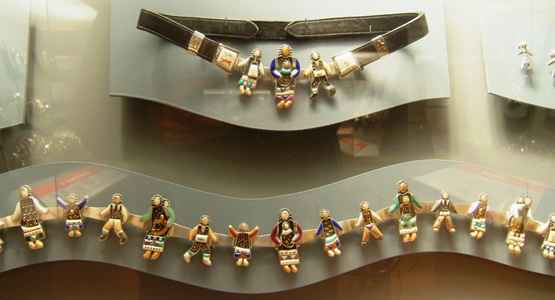 |
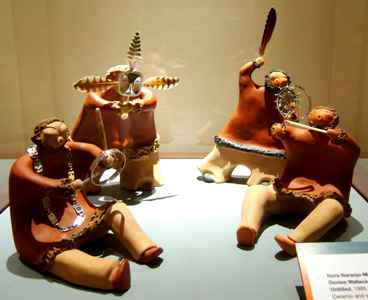 | Today there are
still many different tribes of Arctic peoples in Alaska, northern Canada and
Greenland, with their own languages and artistic styles. However their
different histories and environments have led to different styles and
materials. All the pieces we saw are quite beautiful. |
|